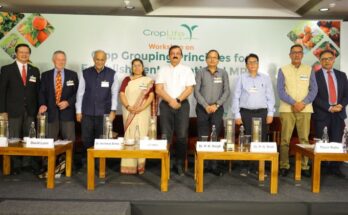India is facing the worst water crisis in its history attributed to its burgeoning population, lack of adequate government planning, increased corporatisation, industrial and human waste, among other factors. According to a recent study by the National Geophysical Research Institute, the largest depletion of groundwater in the world is happening in North India, with Delhi being the epicenter of this growing crisis. According to estimates, water scarcity can lead to loss of up to 6 per cent of gross domestic products (GDP) by 2030. Experts say that ground water is being pumped out 70 per cent faster than was earlier estimated. Efforts to conserve water been negligible as the country lacks both in advocacy and implementation.
Impact on agriculture
This looming water crisis poses a serious challenge to agriculture, with unmonitored water wastage causing a huge loss to farmers who face increased production cost and extreme poverty in drought-prone areas. India ranks second in the world in farm output, and agriculture contributes approximately 17 per cent of the nation’s GDP. Still, irrigation systems in most states are centuries old. There is overdependence on the monsoon and efforts to conserve rainwater are minimal. The irrigation infrastructure, which includes the canal network, groundwater, well-based systems, tanks and other rain water harvesting products for agriculture activities have seen substantial expansion over the years, but it is clearly not enough.
Need for strategic planning
Approximately 78 per cent of the fresh water available in the country is consumed by agriculture. The inequity in irrigation water allocation among crops, with more than 60 per cent of it being diverted for the cultivation of two water-guzzling crops sugarcane and paddy, adds to the distress. These are the two most water-intensive crops and are being cultivated widely in some of the most water-stressed regions of the country. These must be shifted to regions which report a higher water table. Instead, cultivation of less water consuming crops like maize, pulses, and oilseeds should be encouraged in water-stressed regions. As a developing nation, we are paying a heavy price for such misalignment in cropping pattern and impeding agriculture growth.
Most state governments provide subsidised or free electricity to farmers which help them to pump out water for irrigation. It is well recognised that this has resulted in overuse of water and declining groundwater tables. It is estimated that Indian farmers use 2 to 4 times more water to produce a unit of major food crop than in China or Brazil. With decrease in water table there is an increase in the cost of pumping, salination, presence of heavy metals etc., raising questions about the cost of crop production and quality of the produce. Such systems must be reviewed, and alternate options should be implemented. Apart from this, specialised solutions are required in chronically water-stressed regions where normal measures may not be effective.
Modern technologies and localised strategies
For sustainable agriculture growth adoption of water-saving technologies with modern irrigation techniques such as sprinkler and drip irrigation systems need to be implemented aggressively. Beyond that it is now imperative for each state to work on water conservation on a priority basis, govern local irrigation systems, encourage its efficient use, and promote conservation through building dams, reservoirs etc. Lessons can be learned from nations like Israel where the penetration level of micro-irrigation technology is 99 per cent as compared to India, where it hovers at around 13 per cent.
Government’s role
Our country has also set few examples of water conservation at small scales. The NITI Aayog has reported that Rajasthan has strengthened its water management practices. Other states such as Gujarat, Madhya Pradesh and Andhra Pradesh have also shown improvement. However, 60 per cent of the remaining states (15 out of 24) have been classified as low performers in terms of water conservation.
Private sector participation
Private companies can play a critical role in building robust water infrastructure at the grassroot level to encourage water conservation. Public-private-partnership (PPP) model can be a major game changer for the agriculture sector. At present, the government is developing integrated micro-irrigation networks through PPPs to integrate common infrastructure that provides water from canals to the farm-gate with on-farm micro-irrigation infrastructure. But the call of the time is more involvement of private companies, devising their own means to develop solutions for water conservation in rural/agriculture belts. For instance, for over a decade, Dhanuka Agritech, a leading agrochemical company, has made water conservation a major plank of its work with rural communities. It has constructed five check dams filled with rainwater in two districts of Rajasthan, which benefits approximately 3,000 households in the area. The 6th check dam is under construction. Further, it has established a RO water plant with technical support from Nandi Foundation to provide villagers with safe drinking water. Trees prevent floods, soil erosion and help in water conservation. The company has planted 10,000 trees and plans to plant a further 100,000 trees this year with the help of the community. Such initiatives need to be taken up by other private companies which will benefit the local communities they work with.
Solution to bring the change
Sustainable water management has huge role to play in doubling farmer’s income, a notable goal set by the government. It will contribute in improving crop yield and enhance quality of crops. It is a fact that the quality of crop differs a lot in irrigated vs non-irrigated area and better-quality crops will fetch more returns to farmers. The reform must begin now, and it should start by first changing our mindset that is currently obsessed with other priorities. Water-related issues have often taken an ugly shape in the past. It is critical that the situation is exacerbated by making best use of the available technologies and resources to increase water use efficiency. Conserving water is the way to secure our future.
(Views expressed in the article are author’s own)





I’ve beеn surfing on-line more than three hours nowadays, but I by no means found any fascinating article like yours. It is beautiful price sufficient for me. In my view, if all ᴡebsite oԝners and bloցgers made excellent content material as you pгobably did, the net will likely be a lot more helpful than ever before.